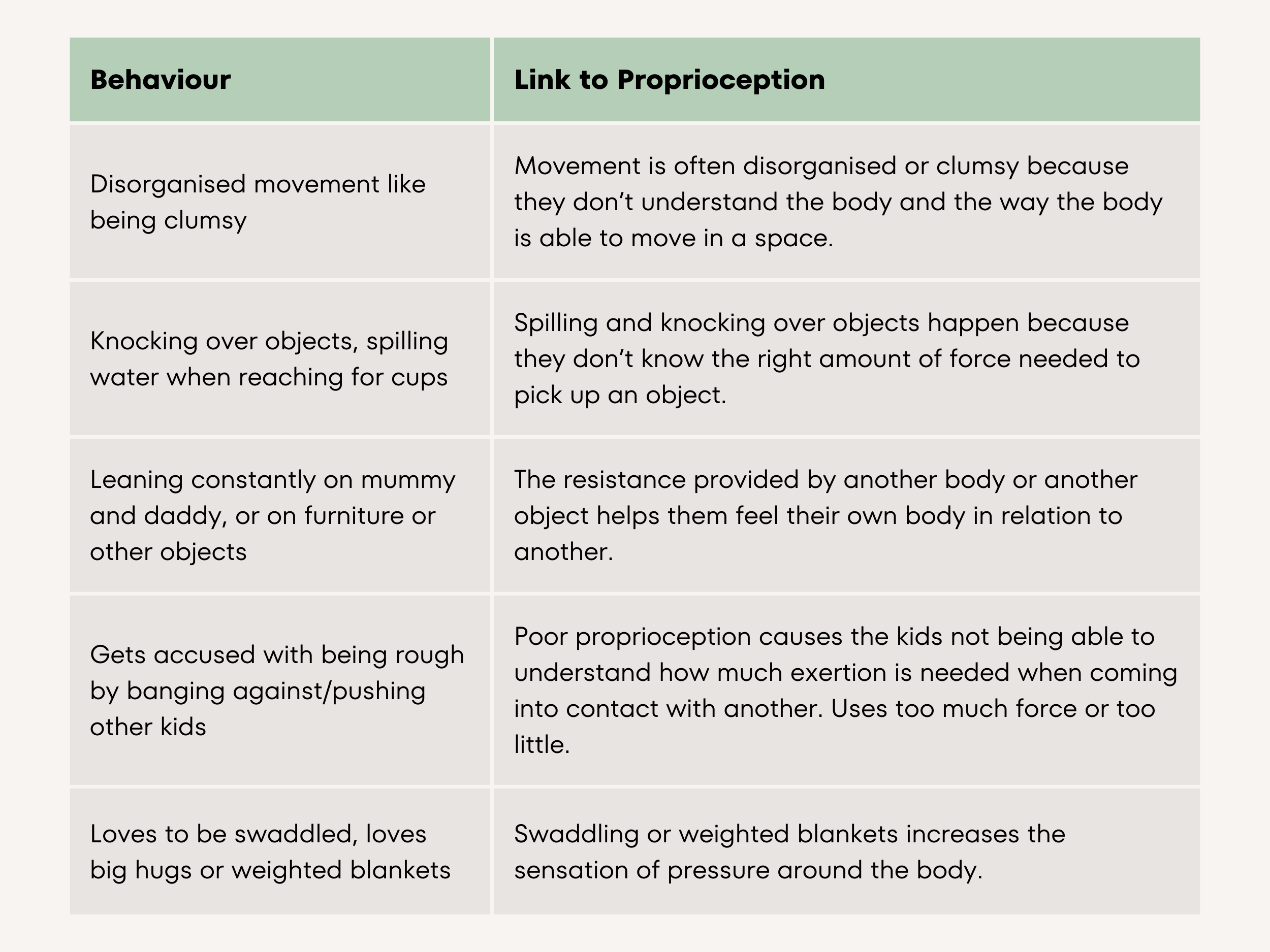Pressure is Necessary: The Importance of the Proprioceptive Sense
Published: 1 May 2024
Have you ever noticed kids being unusually clumsy, or always needing to lean against an object? Or they are always accused of being rough with other kids? They might have poor proprioception.
In this blog, we will explore proprioception - commonly referred by scientists as our sixth sense. Much like interoception (which we explored in this previous article), proprioception is a hidden sense because it operates on the level of our cell receptors.
What is proprioception?
At its core, proprioception is the sense of where the body is in space. It lets us perceive the location, movement and action parts of the body. This arises from sensory receptors in the muscle, skin and joints that bring about sensations in these parts.
One way to test this sense is to close your eyes and see if you are able to touch your nose. There is a high chance that you can because you know where your hand is in relation to the rest of your body and your nose. This is what is known as proprioceptive sense.
What happens when you have poor proprioception?
People who have no sense of proprioception can often feel like they are unable to locate their body if they have no sight of it. When kids have poor proprioception, it may be reflected in the following behaviours:
One easy activity to improve proprioceptive ability is to play in water or bring in the pool because of the added resistance to movement as well as the water pressure against the muscles, joints and skin. This helps kids feel their body more.
Another activity that is useful (for parents familiar with MNRI protocols) is the embrace-squeeze. When kids are being touched and squeezes, it improves proprioception because they can feel the extent of their physical body in relation to someone touching them.
At Neural Connections, we focus on offering treatment and protocols to help children regulate their emotions and behaviour better. Schedule a Discovery Call with us today to see if we can help.


